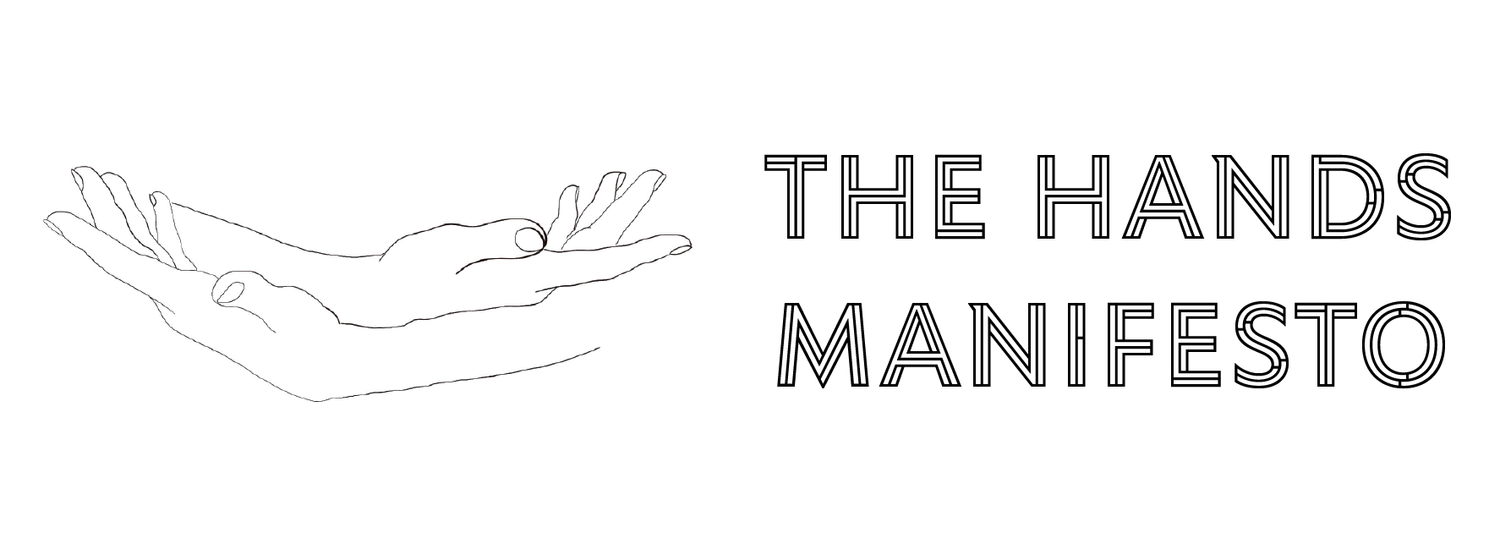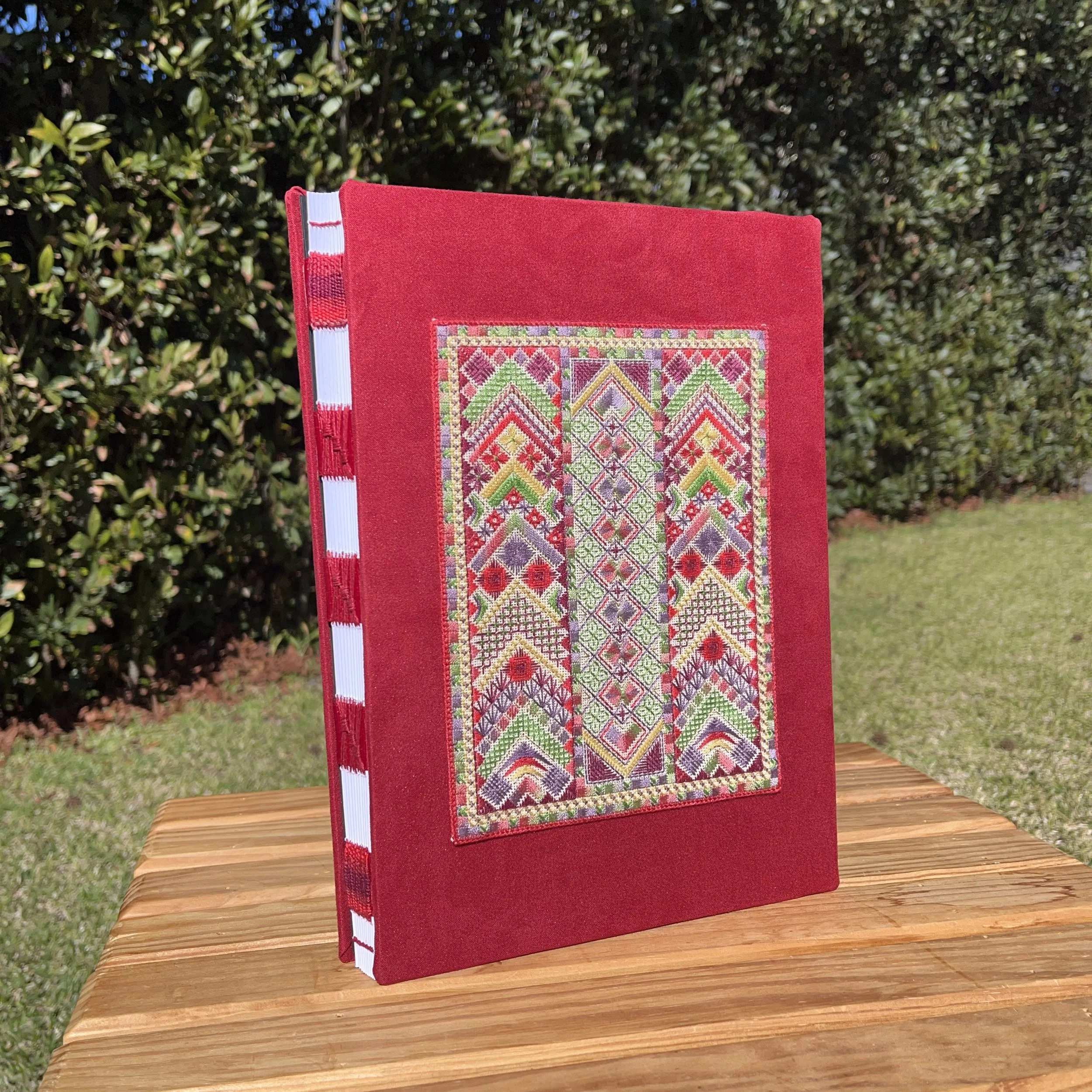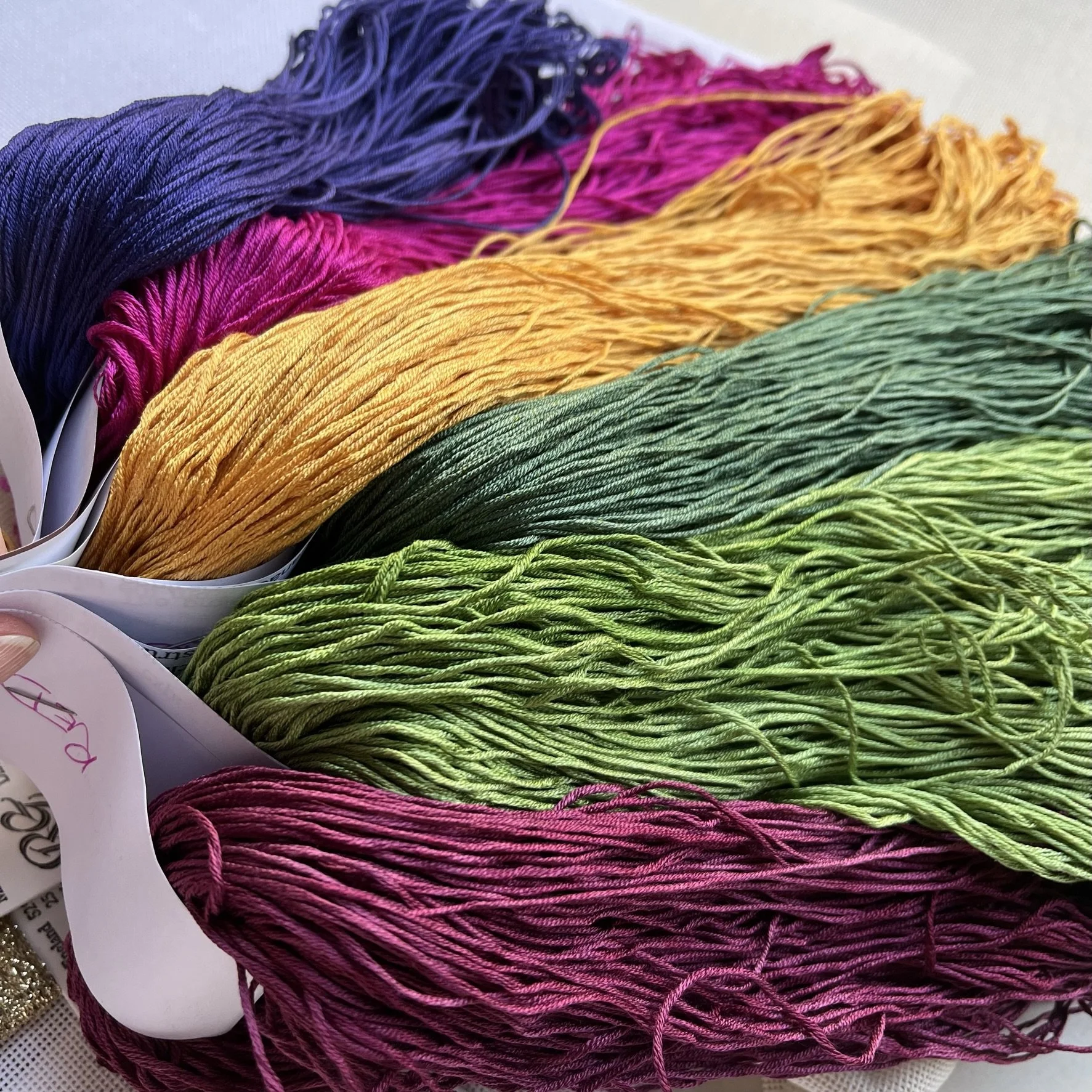Depth of Work
I've had a hugely fun couple of weeks. At the beginning of the month I taught a bookbinding class. Bookbinding is a wonderful way to showcase embroidery, especially if you use techniques where the hand sewn binding becomes part of the overall aesthetic effect. I love sharing these processes because the creative possibilities are almost endless. And unlike most of my embroidery classes, my students usually go home with at least two or three completed books, bound and ready to be used. I can see their creative juices bubbling as the class progresses, getting more and more excited about the possibilities. And the same thing happens to me. I am inspired, all over again, to add a few more books to my collection, ensuring that recent finishes are turned into something useful rather than languishing in a box.
Since the class, I've created four more books and tried some new techniques. My most recent finish, with luscious red covers and detailed stitching on the spine, is destined to become a personal favourite. I even used a copy of the chart of the design as the inside front cover, just to complete the visual story. I'm not sure what I will use it for yet, but I don't plan to leave it empty for the rest of my life either. Because when the time is right, this piece will already have so much of me invested in it. I've hand-dyed the thread, created and stitched the design, and hand made the book which it decorates. There is a deep sense of connection to the piece because it has evolved from layers of creativity, each building on the one before.
My latest handmade book - in all its red glory!
This reminded me of a conversation I had with a good friend last summer. Jill Griffiths is a writer and author of the fascinating book called "What's for Dinner". I recommend it highly if you are interested in understanding more about the complex nuance of ethical choices when it comes to sourcing your food (spoiler alert: there is no simple answer to what is the best choice for both you and the planet). We caught up in that lovely quiet time between Christmas and New Year and, suiting the season, we were both in a reflective frame of mind.
Both of us were grappling with the "what next" question. Jill was telling me about the most fun project in her life at the moment - caring for her goats, milking them daily, and turning that creamy goodness into a variety of cheeses (you can read more about this on her Substack here - https://jillgriffiths.substack.com/). She was talking about how much she loved the daily rhythm of working with the animals, and then the deep sense of satisfaction that came with slowly, almost reverently savouring a delicious cheese where she had been involved with every step of its production. She described it as engaging with a "depth of work" that we don't often get to experience in modern life.
Her phrase described beautifully how hand work takes you to a place of engagement and fulfilment that is hard to replicate when you live life purely through a consumer or achiever lens. It's one of the reasons I love to hand-dye threads for my students and customers so much. It takes a ridiculous amount of time and energy for my assistant and I to wrap the skeins, dye them, label them and then package them up to destinations around the world. There are plenty of thread producers from whom I could source commercially dyed thread, thus making my life a whole lot easier. But I wouldn't then have the fun of standing in my laundry, painting a skein the most delicious shade of purple, and knowing that somewhere in the world, in the next few months, someone will take my love of colour and combine it with their love of stitching to create something special and unique. The depth of work I get to share with that unknown stitcher creates a small but real connection between us.
Luscious colours, ready to be labelled.
When you look at the world through this lens, examples of this deep connection through skilled handwork can be found in all sorts of places. My daughter's flute teacher at primary school was also a flute repairer. He had a deep sense of connection with his instrument as a professional flautist because he knew exactly how to tune and repair it to coax the best sound. A friend of my husband embodies this same principle with guitars - he makes them by hand and has played in a band for years. The passion he has for both is deeply intertwined, which shows up as an extra layer of personal investment and connection when he plays.
Engaging in this depth of work builds a deep respect for the resources and materials relevant to a project. I'm much less likely to be wasteful with my thread when I've spent hours in my laundry every week dyeing it. Similarly, Jill treasures the milk required to make her cheese because she knows how many hours of care and milking it took to harvest the raw materials.
I recently read the wonderful book, "Braiding Sweetgrass", by Robin Wall Kimmerer. This respect for materials, time and process is deeply embedded in her indigenous culture, beautifully illustrated in her description of basket making. This starts right at the very beginning by choosing the right tree - one with no branches on the lower trunk so that long strips ready for weaving can be pulled off the straight, fine grained wood. The stripping process works through the rings, essentially working back in time to when the tree was a young sapling. The rough surfaces on these strips are then polished smooth with a very sharp knife. As Kimmerer's Potawatomi teacher says, "80 percent of the work comes long before you weave". Kimmerer sums this up beautifully. "The marvel of a basket is in its transformation, its journey from wholeness as a living plant to fragmented strands and back to wholeness again as a basket." There is so much respect for the connection between maker and material when this depth of work has been experienced.
Before you get frustrated with me, I am not by any means suggesting that we should all start felling our own trees, take up dyeing threads, keep goats, or make/repair our own musical instruments. But there is something in these stories that reminds us that the more of ourselves we invest in a process, the stronger our sense of connection to the outcome. In a world where, given sufficient funds, we can order nearly everything we want with a few taps on a touchscreen, there is something to be said for sometimes considering an alternative approach. Making it yourself will be slower and less convenient. It will require you to work harder, solve problems, and possibly overcome frustration. But, it will also engage your mind and body in a depth of work that is likely to be much more satisfying. The day that I write the first lines in my new red journal, all of that depth will rise to the surface again, and remind me how much I loved every step of the journey.
PS: If any of you happen to use my hand-dyed threads, please know that it is pure joy for me to share a little of my depth of work with you. And that I have great respect for the silk worms that make it possible - they give so much more than I do.
This Week’s References
Braiding Sweetgrass by Robin Wall Kimmerer. Originally published by Milkweed Editions, 2013. My copy from Penguin Press, 2020.
What’s for Dinner by Jill Griffiths, Thames & Hudson Aust, 2023.
How to comment
I love receiving your comments and hearing your ideas! Making a comment is easy. Just type it into the box below. If you test it with “Preview” first, the name field will show “Not Logged In” (which is a system thing I can’t change). Never fear though! When you click on “Post Comment”, a dialogue box will come up asking for your Name, Email, and Website URL. The only field that must be completed is “Name”. It can be anything you choose - full name, first name, initials, nickname. So go ahead. Let me know what you think :)


